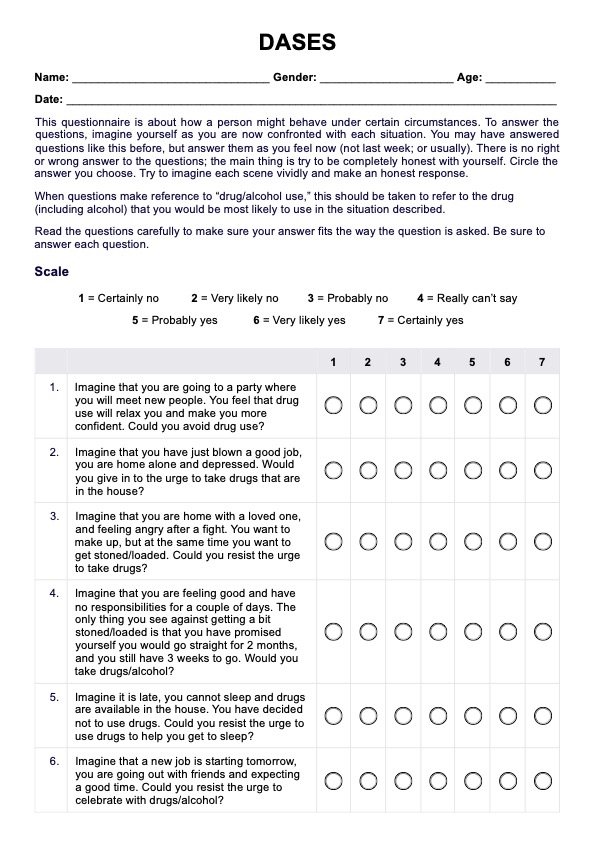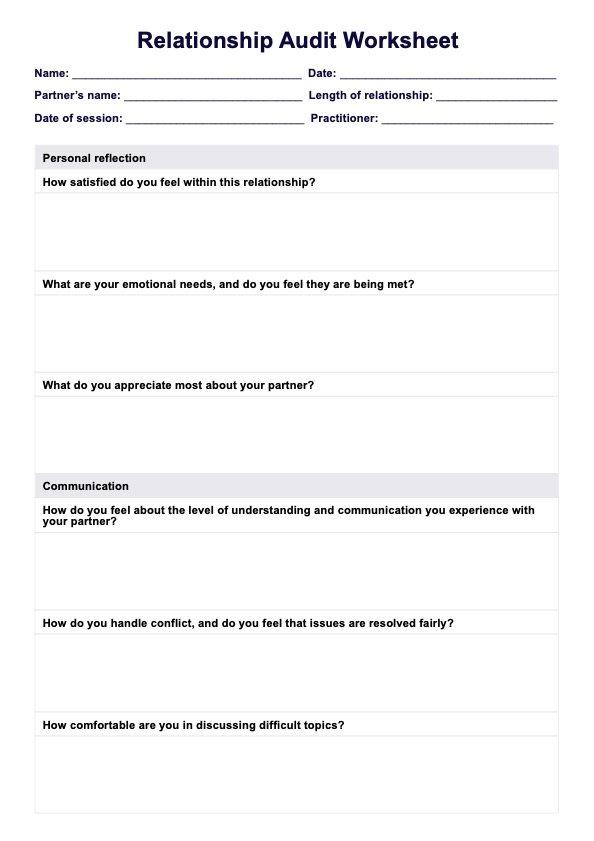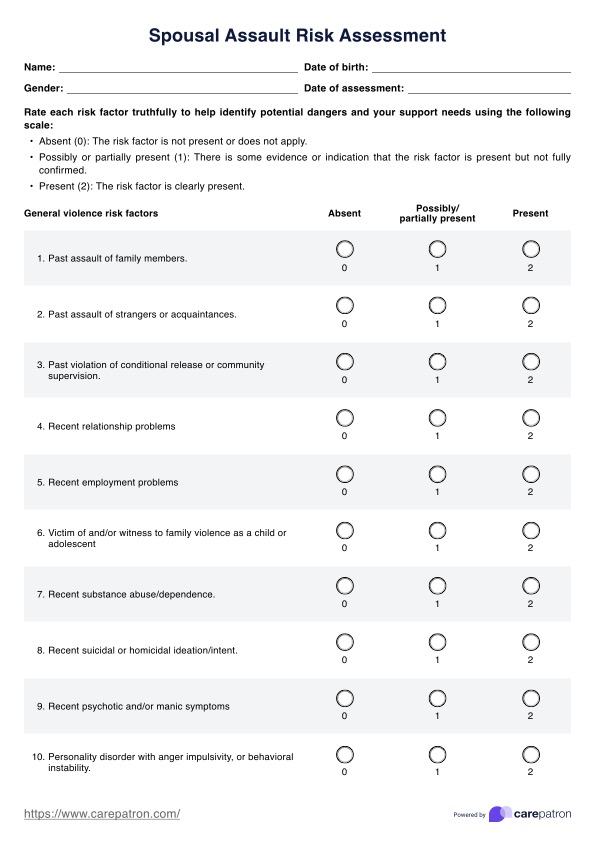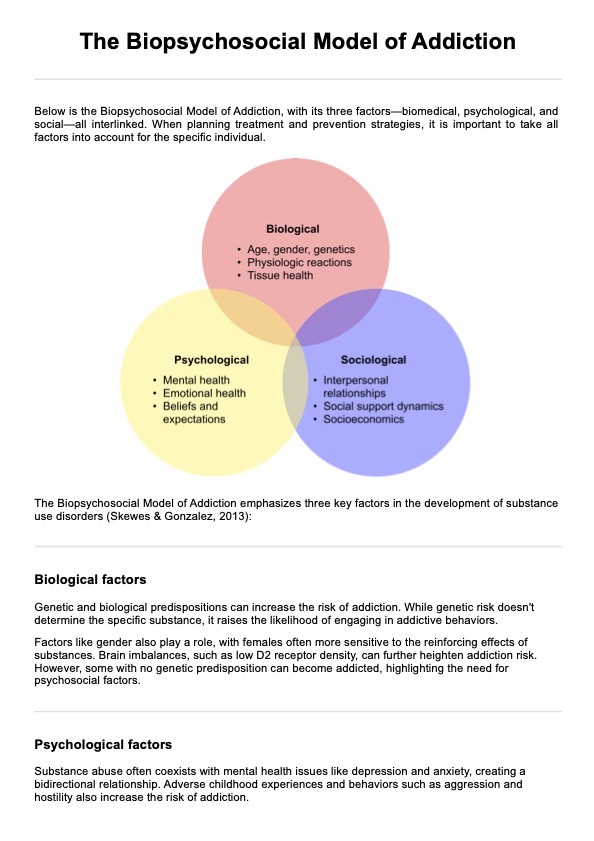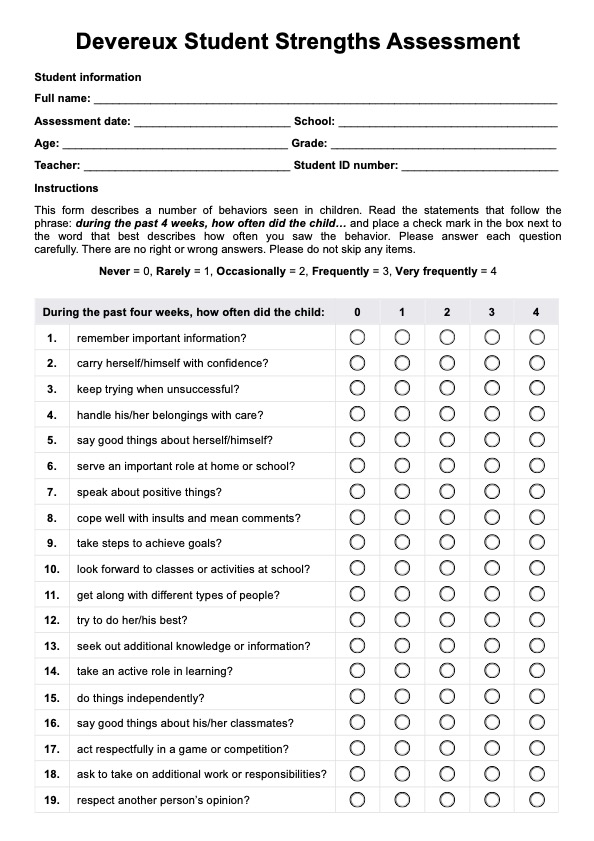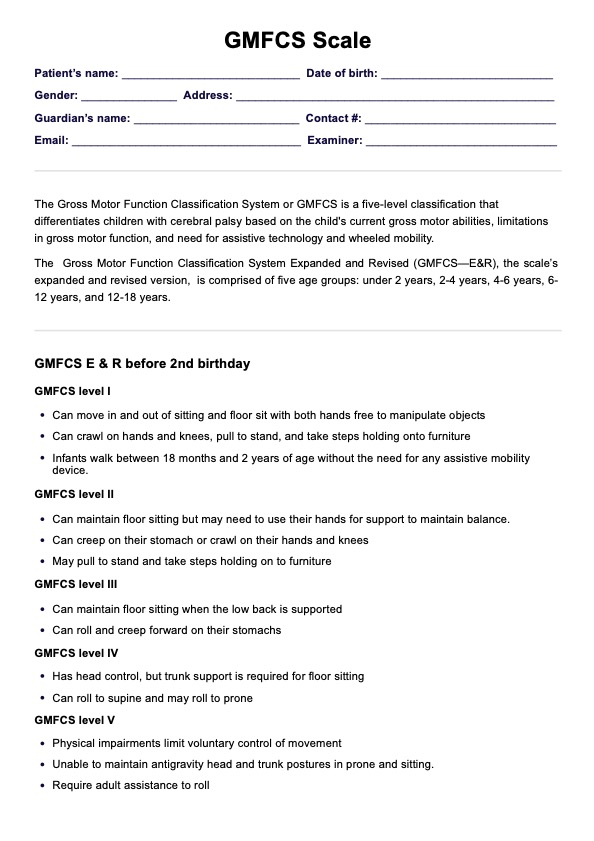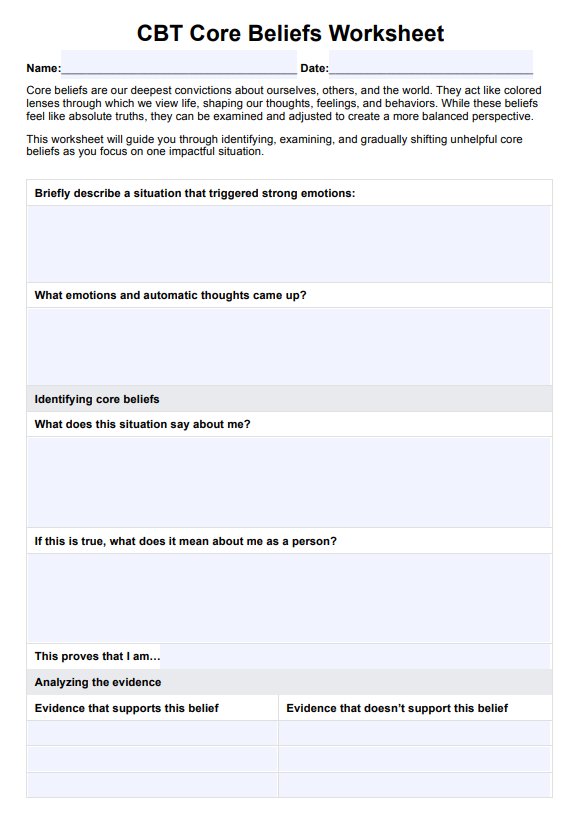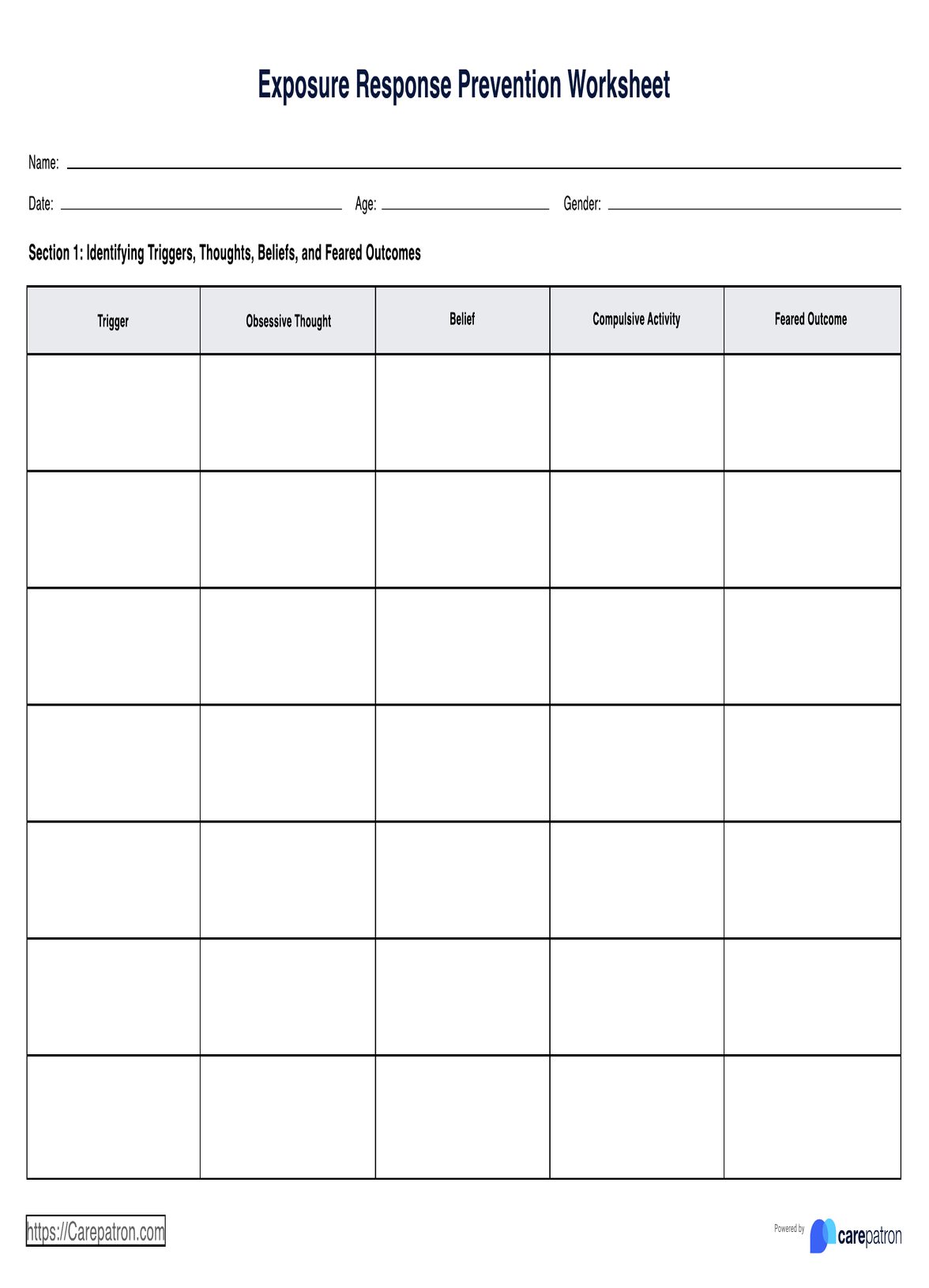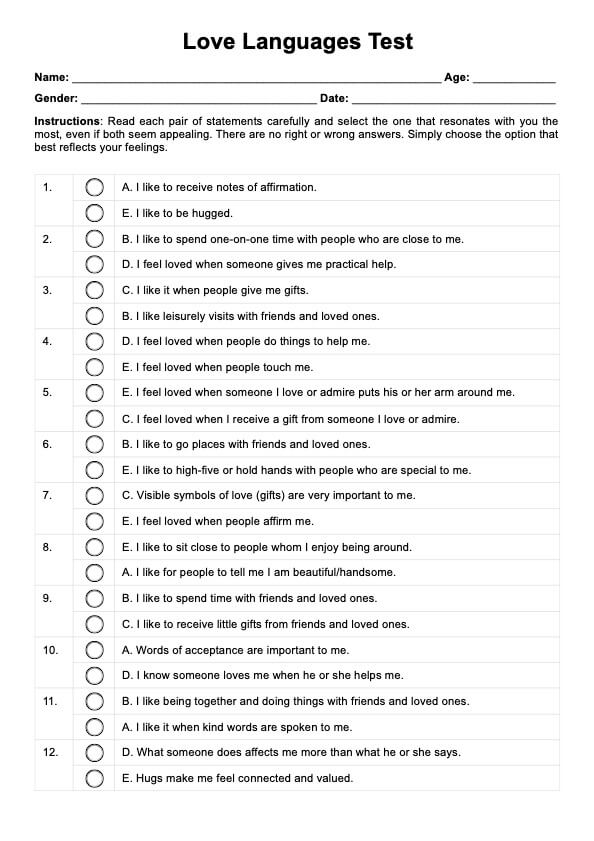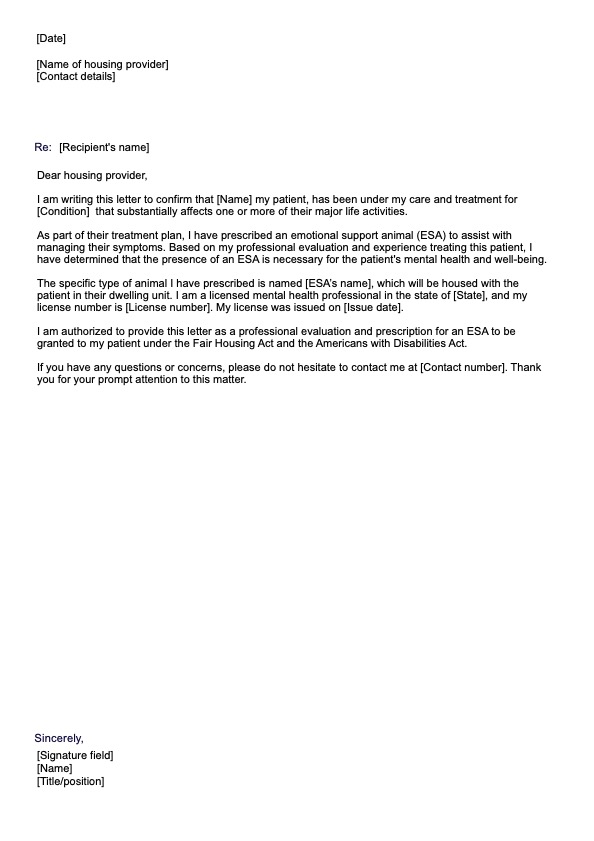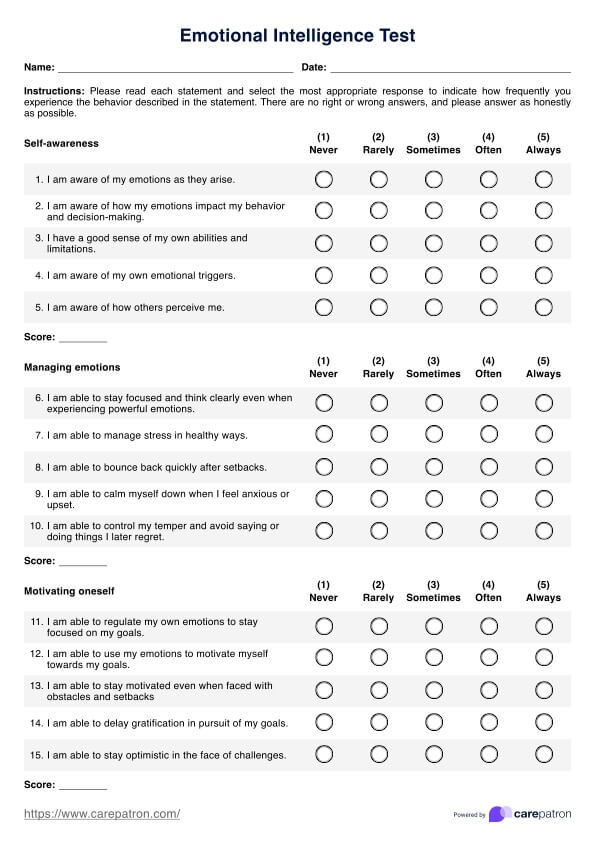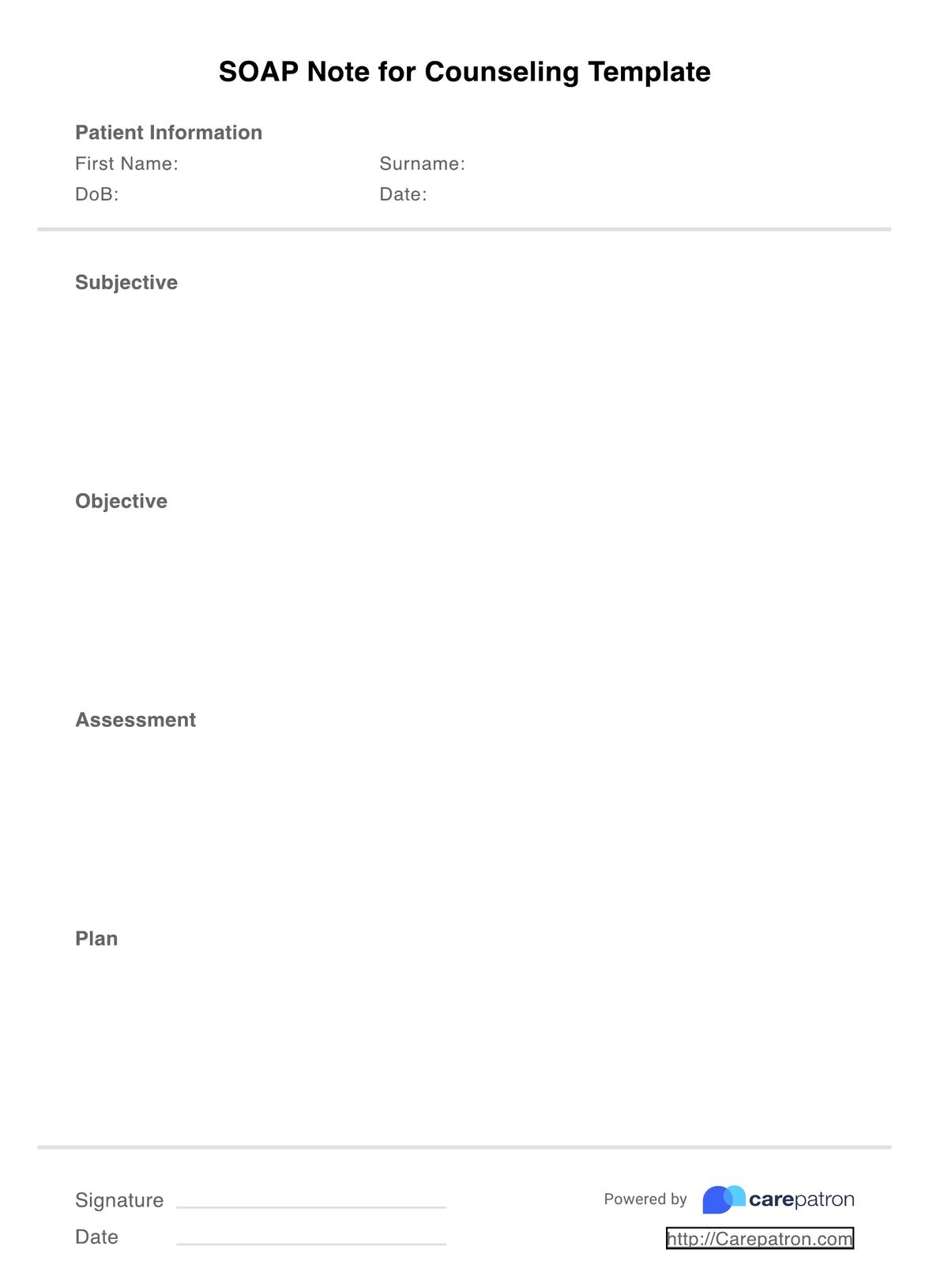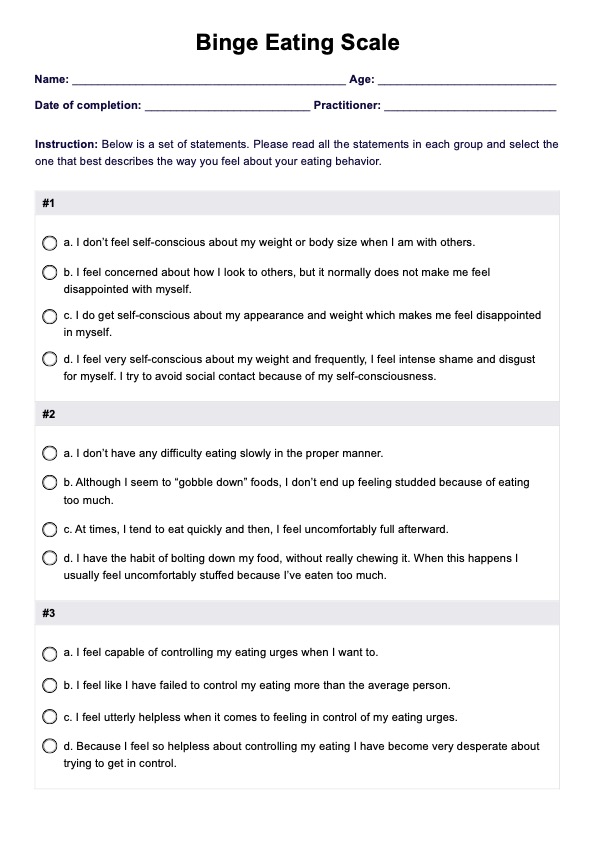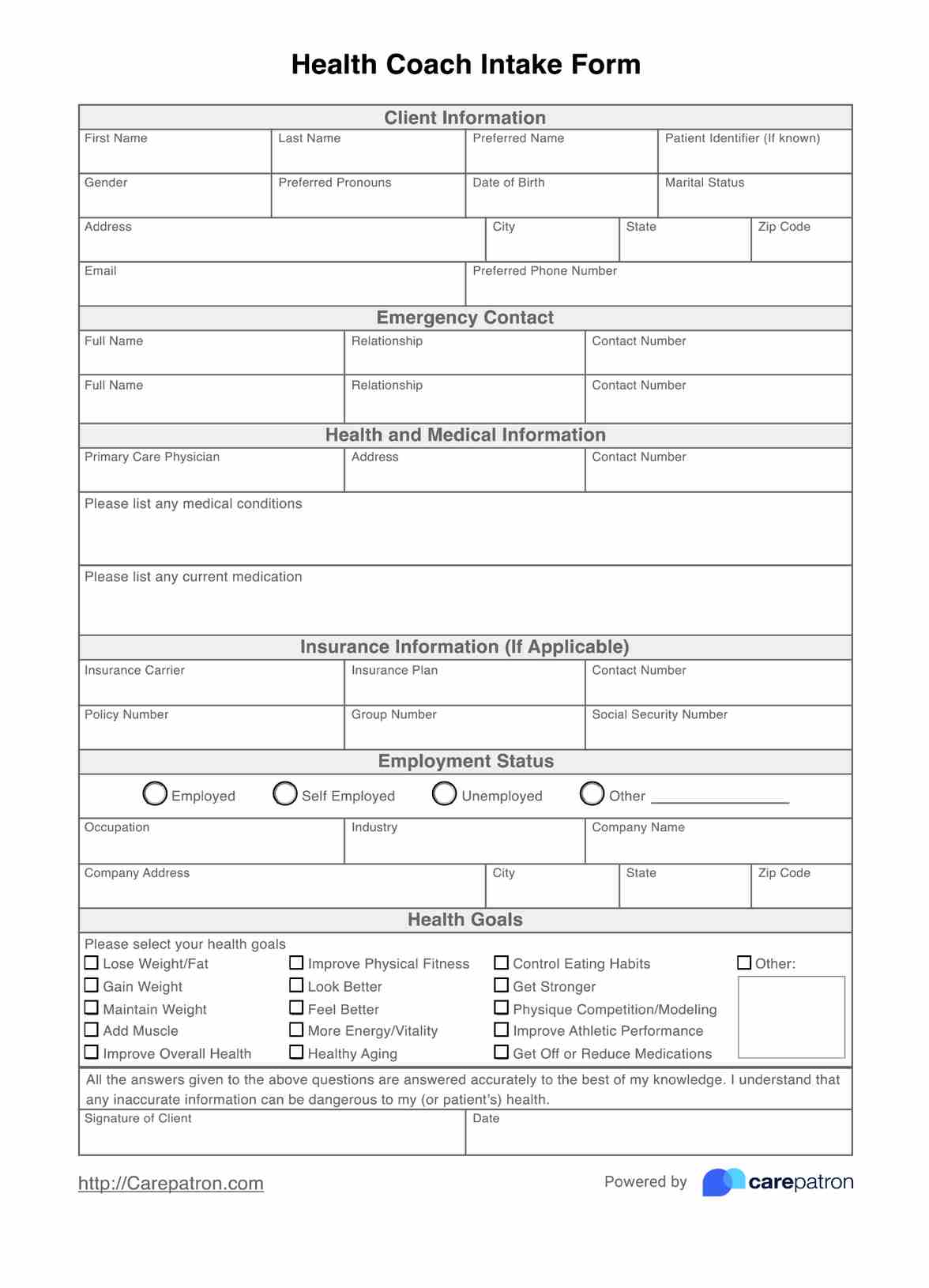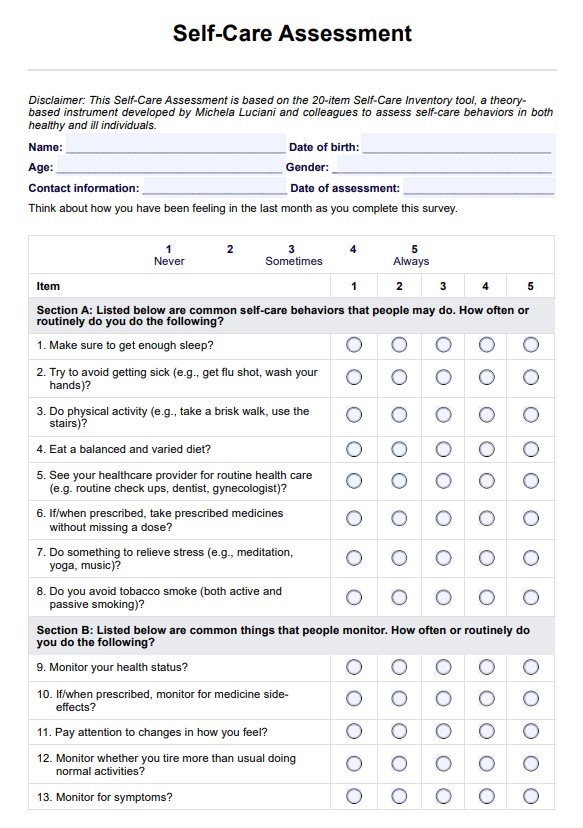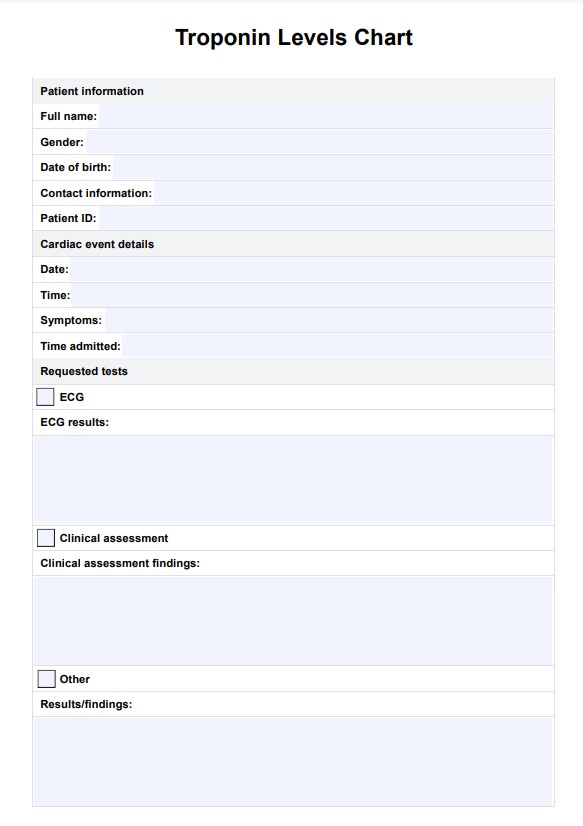Limiting Beliefs Worksheet
Help clients identify and overcome self-limiting beliefs with our Limiting Beliefs Worksheet.


What are limiting beliefs?
As practitioners, we might have heard our clients talk about hesitating to pursue a dream, feeling they don't deserve success, or doubting their abilities. These moments are often shaped by what are called "limiting beliefs." Limiting beliefs are deeply ingrained assumptions or perceptions about oneself, others, and the world that restrict personal growth and potential.
Limiting beliefs are negative core beliefs that affect one's thoughts, actions, and overall well-being. They often stem from life experiences, shaping clients' perceptions and influencing decisions. For instance, if early experiences teach them that money is scarce, they may develop a self-limiting belief about their ability to achieve financial success.
The concept of limiting beliefs finds its roots in cognitive behavior therapy (CBT), a widely recognized therapeutic approach. CBT explores how thoughts, feelings, and behaviors are interconnected, emphasizing the impact of our beliefs on our mental and emotional state.
Self-limiting beliefs are present in various aspects of our clients' lives. Whether it's the belief that success is reserved for others or the idea that they are incapable of achieving their dreams, these negative beliefs create a mental barrier, preventing them from realizing their best life and true potential.
Limiting Beliefs Worksheet Template
Limiting Beliefs Worksheet Example
How to use this Limiting Beliefs Worksheet?
Self-discovery and transformation involve confronting and overcoming self-limiting beliefs. This self-limiting belief worksheet is designed to guide clients through this transformative process, providing a structured exercise to help them identify, challenge, and overcome limiting beliefs. To use this tool in your clinical practice, follow these steps:
Step 1: Download the worksheet template
Begin by accessing our free Limiting Beliefs Worksheet from this guide. You can click on "Use template" to access and customize this within the Carepatron platform. You can also choose "Download" to get a fillable PDF copy to print or use digitally.
Step 2: Let clients identify their limiting belief
Begin by having clients identify a limiting belief currently impacting their lives. This initial exploration includes writing down the root cause or when the belief first developed and examining key experiences that reinforced it. To help this process, you can let clients explore resources such as a limiting beliefs list PDF available online or our self-limiting beliefs examples included in this guide's sample template.
Step 3: Assess the impact
Guide clients through a comprehensive evaluation of how their identified beliefs and negative thinking patterns affect their daily actions, relationships, and career/goals and potentially elicit negative emotions. Understanding these impacts helps establish motivation for change, improve self-esteem, and help identify specific areas for intervention.
Step 4: Examine the evidence and create new beliefs
Facilitate a structured analysis where clients list evidence supporting and challenging their limiting beliefs or negative thoughts. Then, guide them in transforming the limiting belief into an empowering one, ensuring the new belief is realistic and meaningful to the client.
Step 5: Action planning
The final step involves creating a concrete action plan with three specific, achievable steps to reinforce the new belief. This behavioral activation component in cognitive therapy is crucial for long-term change and overcoming limiting beliefs.
Benefits of using this Limiting Beliefs Worksheet
The Limiting Beliefs Worksheet is a structured intervention tool facilitating meaningful cognitive and behavioral change. Using this in practice can offer the following benefits:
Enhanced self-awareness and recognition
The worksheet helps individuals become aware of their recurring thoughts and behavioral patterns. When people actively acknowledge their limiting beliefs, they develop greater insight into how these attitudes affect their daily experiences. This heightened awareness is a crucial first step in the transformation process, allowing people to break free of their limiting beliefs.
Structured cognitive restructuring
Through systematic examination and prompts, clients learn to challenge their existing mindsets and opinions. This structured approach helps reduce anxiety and fear associated with stepping outside one's comfort zone. The process allows individuals to critically examine beliefs about success, including preconceptions about achievement and success.
Behavioral activation and growth
The worksheet's transformative power lies in converting awareness into action. Most people experience significant improvements in goal attainment when they focus on evidence-based belief reconstruction. This process helps clients move from feeling in a bad place to reaching their full potential.
References
Amo, V., Prentice, M., & Lieder, F. (2022). A Gamified mobile app that helps people develop the Metacognitive skills to cope with stressful situations and difficult emotions: Formative assessment of the InsightApp (Preprint). https://doi.org/10.2196/preprints.44429
Susaeta, L., Babinger, F., & Muñoz, N. (2020). Influence of limiting beliefs in soft employability skills. Tourism, 68(2), 207-220. https://doi.org/10.37741/t.68.2.8
Commonly asked questions
Common limiting beliefs often include thoughts such as "I'm not good enough," "I can't succeed," "It's too late for me," and "I don't deserve happiness," which can hinder personal growth and achievement by creating self-doubt and fear of failure.
The best way to remove limiting beliefs involves a multi-step approach: first, identify the specific beliefs that are holding you back; then, challenge these beliefs by questioning their validity and considering alternative perspectives; and finally, replace them with empowering affirmations or new beliefs that align with your goals and aspirations.
The root cause of limiting beliefs typically stems from past experiences, societal norms, or early childhood conditioning. Negative feedback or failures can lead to generalized assumptions about oneself or the world, reinforcing a mindset that limits potential and opportunities for growth.


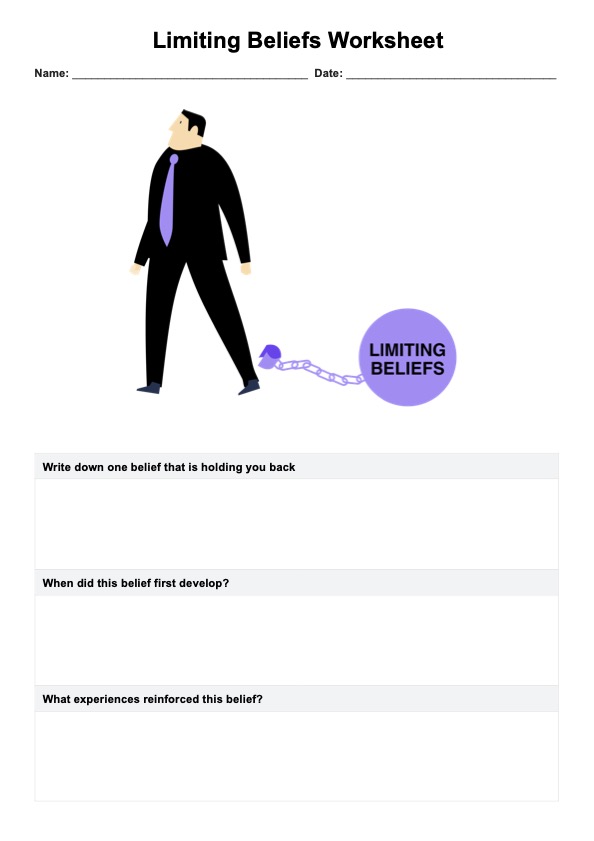






















-template.jpg)



